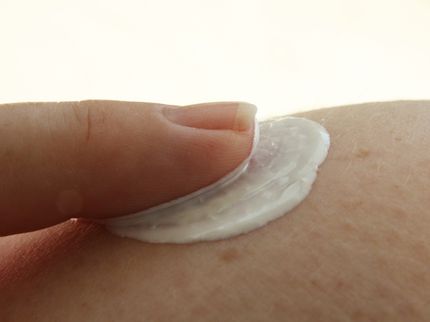Clemson bioengineer uses nanoparticles to target drugs
Advertisement
Clemson bioengineer Frank Alexis is designing new ways to target drugs and reduce the chances for side effects.
Pharmaceutical commercials can cause the unsettling feeling that if the disease doesn't kill, the cure will, what with a drug's long list of side effects and warnings. Many therapeutic drugs administered by pill, cream, syringe, IV or liquid can be a hit or miss delivery system. Researchers report that only 1 of 100,000 molecules of an intravenous drug make it to the intended spot in the body.
"The big issues for making medicines more effective are getting drugs to where they are needed and keeping them from breaking down as they circulate through the body," said Alexis. "A way to improve targeting a drug and preventing it from be passed out of the body is putting it in envelopes — putting the drug inside something to protect it until it's at the right spot."
The envelopes Alexis uses are nanoparticles. Think of an M&M, with the nanoparticle being the hard outer candy shell and the chocolate being the medicine. The goal would be the same as for an M&M — to melt in the right place.
"Nanoparticles can be modified many ways," said Alexis. "They can be coated so that they can be durable and stable. They can be patterned so that they match up like a key and a lock to connect to certain cells, tissues and organs. Some drugs are not taken up because of their physical and chemical properties."
A challenge for oral medicines, for example, is getting them to do some good before the body destroys them. A patient's metabolism can do its job too well taking a drug out of circulation. Called "first-pass metabolism," the liver breaks down a drug during its first trip circulating through the body. The result is doctors must use greater amounts of oral medicines to achieve the therapeutic effect. Negative reactions from the higher doses or the inconvenience from prolonged treatment cause many patients to stop taking their medicines.
Nanoparticles can be made to survive the first pass. The particles also can be made to get beyond the body's immune system. Multi-layers on the nanoparticles or nanoshells can resist the body's defenses, enabling the medicine to last longer or reach the intended location.
Dendrimers are nanoparticles that could become the Swiss Army knives of targeted drug delivery. The particles can be made so that a number of different kinds of molecules could be attached to it. One group of molecules could fight the disease, another could enhance images to track the drug, a third could carry a chemical trigger to release the medicine by command from outside the body, another, still, that could send signals about results.
"We are moving ahead in nanoscience in laboratories throughout the world," said Alexis. "Nanoparticle functionalities become more and more complex and the next step is for the research to develop technologies allowing their transfer from the research bench to a pharmaceutical drug. New ways of targeting drugs that will be more effective and safe and more agreeable to patients is just over the horizon."





















































